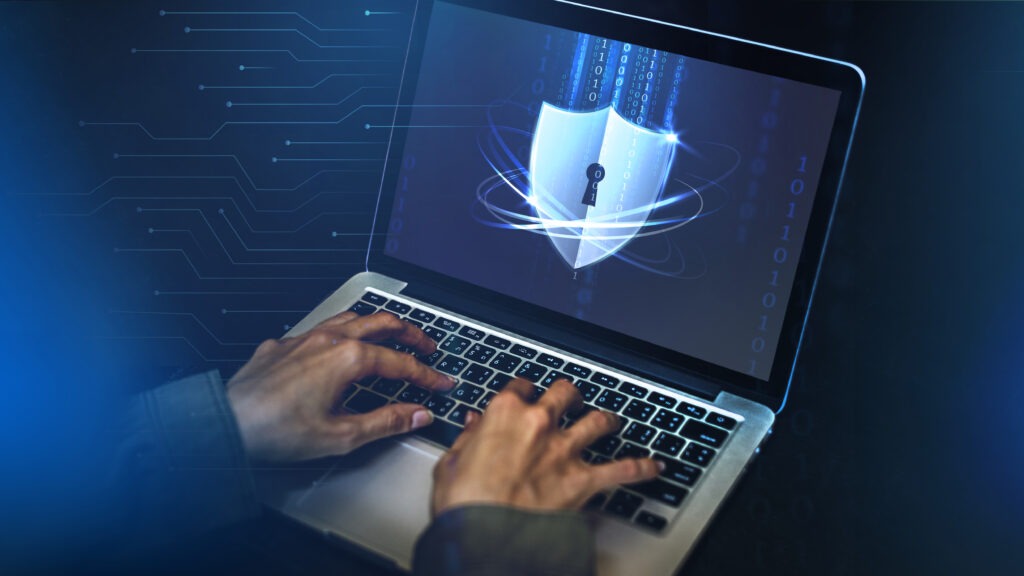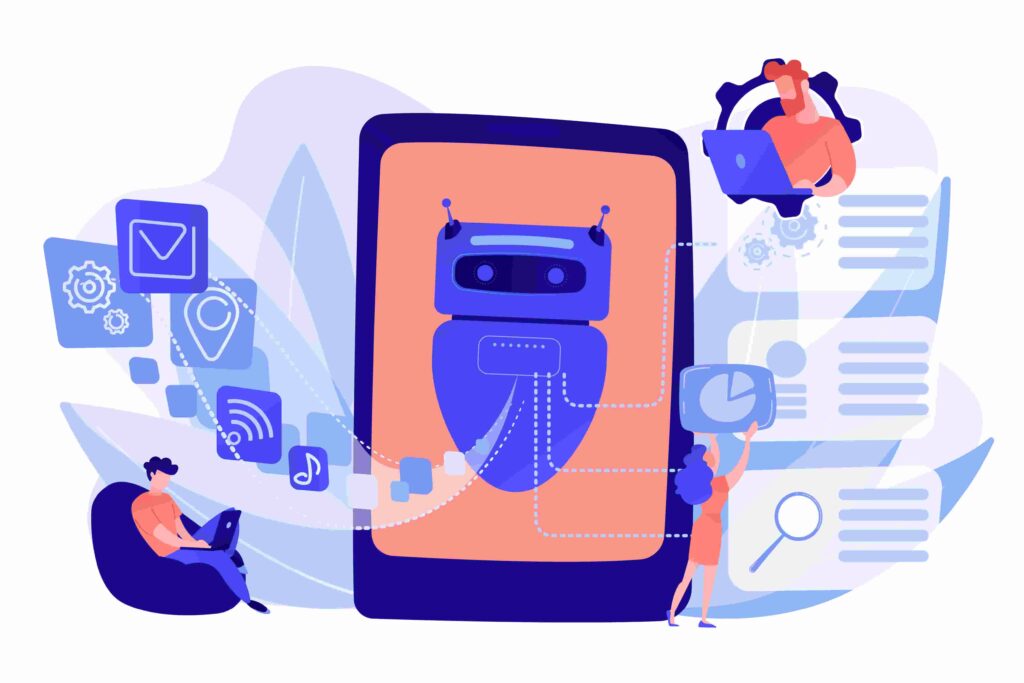Human firewall refers to well-trained users who follow best practices to prevent and report data breaches or suspicious activities in website navigation or when checking emails, for example, thus acting as an extra layer of security.
Although several mechanisms are usually adopted to protect internet users from cyber attacks, a human firewall, which is the last line of defense, is extremely important as it ensures an additional layer of security.
Therefore, providing specific training to users is crucial to ensure they are permanently vigilant against cyber attacks.
By adopting this layer of human protection, breaches may be prevented as a final resort, when other measures haven’t worked out in situations of system faults, configuration issues or failure to update security systems.
But how do cyber attacks happen and how to prevent them?
Many situations can cause security breaches, including software errors and system faults. When these events happen, systems become unprotected, so breaches can only be interrupted with the action of users.
Also, other cyber attack techniques, such as social engineering, target unprepared users when they browse unsafe websites or click phishing emails.
In this article, you will understand how a human firewall can prevent cyber attacks and about other security resources to mitigate cyber risks. It will address the following topics:
- What is a human firewall?
- How does a human firewall work?
- Why is a human layer so important?
- How to mitigate risks from internal threats?
- Tools for effective human firewall training
What is a human firewall?
A human firewall is exactly what the name suggests: an extra layer of protection provided by users who have been trained to identify potential cyber threats.
Firewall is a network security device that monitors user actions and inbound/outbound traffic and decides to allow or block a specific access based on a set of security rules.
Likewise, in a human firewall, a company’s user or employee analyzes the threat and decides whether to authorize or deny the access, click a link or not, allow to browse a page or not, among other decisions.
Then, firewalls act as the front line of defense in network security, building a barrier for access to internal or external networks, which may or may not be reliable, such as the internet.
How does a human firewall work?
How can users act as a human firewall?
With an increase in cyber attacks, employees must be able to identify cyber security gaps so companies can have a reliable, stable, and intact system.
Providing user training and increasing employee awareness about how cyber attacks happen and how to avoid them are very effective tools to prevent these events, mobilizing all your employees and the IT sector and reinforcing that cyber security is the most common effective practice to prevent cyber risks.
After all, employees with access to email or websites can be vulnerable to cyber attacks if they are not aware of the risks involved in their actions.
For this reason, all employees who have access to company data and systems, at all levels, must be able to analyze risks, respecting the company’s compliance and risk management rules.
According to recent studies, the most common security breach occurs when employees click email links or attachments from suspicious sources.
These links usually install malware or collect confidential information of the company and constitute phishing attacks.
With trained users and employees, cyber attack prevention is much easier and more efficient, as users are prepared to identify problems and threats in suspicious links, attachments, and emails.
Why is a human layer so important?
Today, email is the main cyber attack method used by hackers.
According to recent studies, about two-thirds of emails sent worldwide are spam or malicious, that is, unsolicited messages that can cheat users and extract sensitive information.
Then, email is a recurring method adopted by internet scammers as it is an easy way to attract users, using methods such as mental triggers, false promotions, and raffle prizes.
For this reason, users of internal and external networks must be prepared to identify recurring threats to avoid compromising sensitive and confidential data.
Employees must be able to identify the signs of traps in questionable emails and websites, thus contributing to the protection of the company’s security system as a whole.
And do you know why cheating a human being is easier than cheating a machine? People are the most easily influenced link in a security system, as they are moved by feelings and emotions.
This human nature constitutes a point of entry for attacks that use the social engineering technique, which focuses on human failure and lack of preparation to handle scams and breaches in cyber environments.
Social engineering
Social engineering is a manipulation technique that persuades users to make security mistakes and disclose sensitive information, which compromises the security of personal and corporate data.
This technique uses strategies to influence human consciousness and intelligence, exploiting flaws that lead users to violate security rules.
How to mitigate risks from internal threats?
Internal threats in a company are directly linked with its employees and can represent a significant risk to the security of shared networks.
Security problems can also be related to navigation issues or malicious employees who intentionally violate security rules.
However, according to data from recent studies, 38% of cyber attacks are caused by phishing, 21% by spear phishing, 16% by weak passwords, and 7% by browsing suspicious websites.
There are many points of entry for criminals, from clicking a simple link, downloading a suspicious file to discovering standardized passwords.
Therefore, it’s important to mitigate internal threats, not accepting imprudent and negligent behaviors, data breaches, among other actions.
For instance, that was the case during the recent global pandemic, when the number of employees using external networks increased, leading to more scams over the internet.
Tools for effective human firewall training
Security awareness training is the best way to create a human firewall
No matter how good your prevention tools are, system breaches are inevitable. Therefore, employee training is essential in order to reduce security issues.
Incident management training can effectively improve the security of your company and must have several tools, including:
- Employee training about basic concepts of cybersecurity;
- Employee training about how to identify and handle phishing attacks;
- Implementation of a reporting system for suspected phishing emails;
- Frequent updates to maintain current knowledge about cyber attacks;
- Tests to identify possible flaws in the user training or awareness.
The best training programs are focused on building user awareness and decreasing phishing click rate.
Good education can significantly reduce attacks, but it won’t prevent all of them. The occurrence of failures is common in all types of systems, as there will always be negligent and rushed users.
In addition to proper training to improve system security, it’s very important to develop a governance policy that includes well-defined rules and regulations for the use of virtual environments.
Review your policy regularly and share it with your employees so they can follow best practices, such as:
- Employees should not click attachments or links from unknown sources;
- Employees should not use USB flash drives on company computers;
- The company must have a password management policy (highlighting no passwords reuse, no passwords on post-it notes on computer screens);
- The company must have a Wi-Fi access policy;
- among others.
It is also very important to develop standard procedures for the IT department, such as:
- Block the access to websites known for spreading ransomware;
- Update software patches and virus signature files;
- Perform vulnerability scans and system self-assessment;
- Perform regular Wi-Fi penetration tests and tests for other networks;
- Establish protection against domain spoofing;
- Develop rules for the intrusion detection system that identify emails with similar extensions to company emails.
Therefore, a human firewall is an essential tool to protect your company against cyber attacks and intrusion of any type.
When users work together, they can identify threats and prevent data breaches or mitigate permanent damage. Combining technology with a human firewall is the best solution.
The amplitude of a cyber attack is broader than we imagine and includes several variables, as if we were assembling a puzzle.
Any action, wrong click or access to an unsafe page can become doors for criminals to access your system and your information, causing serious problems.
It’s always important to remember that humans can be as intelligent as, or even more intelligent than a machine, because humans have different perceptions and critical analyses of the environment. Therefore, it’s more difficult to go unnoticed if an employee is prepared to handle this type of threat.
Establish the security level of your employees and learn how to protect your company with Milvus.
In addition to reinforcing your human firewall, it’s always crucial to have an efficient IT system.
With the Milvus Smart HelpDesk service, you can optimize the routine processes of your team, allowing your staff to focus on what is more valuable for your business: your information.
Take a free trial and learn more about all features of Milvus service!






